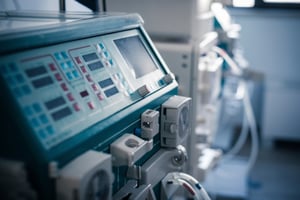FDA Permits Marketing of First Catheter-Based Systems to Create Vascular Access for Hemodialysis Patients
On June 22nd, 2018, the U.S. Food and Drug Administration announced that it has permitted the marketing of two catheter-based devices designed to create a connection  to veins and arteries in patients with chronic kidney disease who need hemodialysis.
to veins and arteries in patients with chronic kidney disease who need hemodialysis.
Specifically, the FDA granted marketing authorization for the use of the Ellipsys Vascular Access System to Avenu Medical and the everlinQ endoAVF System to TVA Medical, Inc. The devices create an arteriovenous (AV) fistula for patients who need hemodialysis access percutaneously (through the skin).
A catheter is inserted into a blood vessel in the arm and is guided to the site of the planned AV fistula. The devices then deliver energy to form a connection between an upper forearm artery and an adjacent vein. The Ellipsys Vascular Access System uses one catheter, the everlinQ endoAVF System uses two.
Both devices should not be used for creation of connections in vessels that are less than two millimeters in diameter or too far apart (for example, in the wrist or in the hand). For both devices, complications include occlusion or collapse of the fistula, bruising that result in the need for additional procedures.
The Ellipsys Vascular Access System and everlinQ endoAVF System were reviewed through the De Novo premarket review pathway, a regulatory pathway for some low to moderate risk devices of a new type. This action also creates a new regulatory classification, which means that subsequent devices with the same intended use may go through the FDA’s 510(k) process, whereby devices can obtain marketing authorization by demonstrating substantial equivalence to a predicate device.
In November 2018, the Ellipsys device also received a separate Medicare reimbursement code.
Reference: FDA News Release




